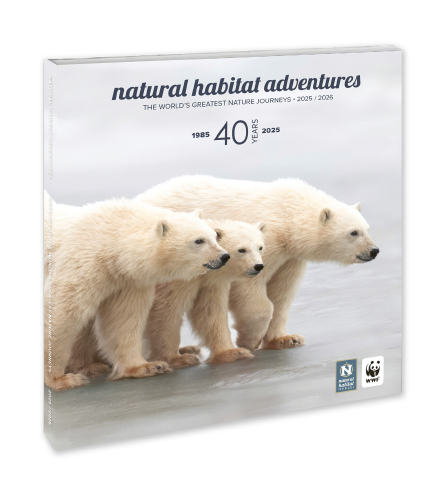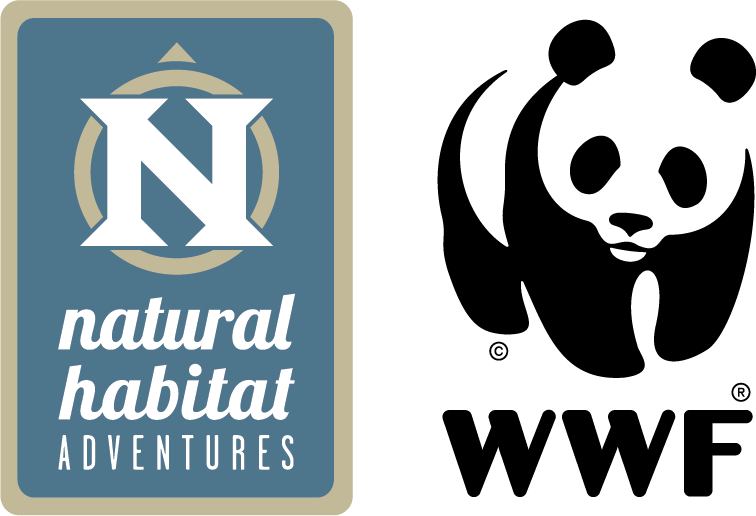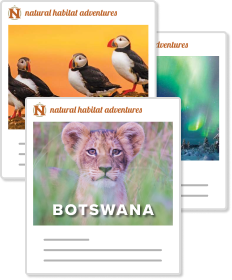Itinerary
Our Namibia desert extension begins in Windhoek, the country's capital and largest city. Modern and walkable, Windhoek exudes an urban African flair and a relaxed sense of European cafe culture, including a lively pedestrian district with busy shops and market stalls. Once the former colonial capital of German South-West Africa, Windhoek embodies that heritage today, with a skyline interspersing historic castles and cathedral spires with contemporary glass skyscrapers. The city's German heritage lingers in the language and cuisine as well. You are met on arrival and transferred to our boutique lodgings in a tranquil sector of the city.
Days 2 & 3: Private Kulala Wilderness Reserve—Sossusvlei Dunes
This morning, fly to the private Kulala Wilderness Reserve at the edge of Namibia’s great sand sea, our base for exploring Sossusvlei, a vast clay pan surrounded by some of the world's tallest sand dunes. Rising a thousand feet above the floor of the Namib Desert, these shape-shifting mountains of golden sand are framed by deep blue skies to create one of Africa’s most dramatic landscapes. The word namib in the Nama language means “vast,” an apt name for this ancient arid expanse, which is the world’s oldest desert. The pans themselves resemble moonscapes—yet this stark environment is surprisingly full of life. Sossusvlei is home to a variety of desert-adapted animals, including ostrich, springbok and gemsbok. Occasionally you may spot hyena or the rare dune lark endemic to this area, as well as nocturnal creatures like bat-eared fox, Cape fox, black-backed jackal, porcupine and aardwolf.
Kulala Wilderness Reserve encompasses more than 90,000 acres of scenic landscapes and intriguing geological formations. Explore the contrasts on 4x4 drives and guided walks along dunes and dry riverbeds home to fascinating insects, reptiles and rodents. On a late afternoon drive, stop for sundowners at the classic "golden hour" when the dunes appear burnt orange, deepening to carnelian red as the sun sinks. Retreat to the cool depths of Sesriem Canyon, or to Dead Vlei, a nearby pan where water once flowed and eerie tree skeletons linger. In the twisted and narrow labyrinth of Sesriem Canyon, see where water over millions of years carved its way through the sedimentary layers and left a cool, sandy bottom for exploration. You may opt to survey the dunes from on high in a hot air balloon, complete with champagne breakfast upon landing, or traverse the desert expanse on a quad bike (additional fee for balloon and quad bike trips).
Days 4 — 6: Damaraland

Fly to the rugged Damaraland region in northwest Namibia. Here we find the Torra, Palmwag and Doro Nawas conservancies in the Huab River Valley, one of Namibia’s most pristine tracts of wilderness. The Brandberg Mountains tower over deep gorges, sun-baked sand expanses and ancient petrified forests—and at night, some of the darkest, starriest skies on Earth glitter overhead. Dry riverbeds carve through deep gorges, creating ribbon-like valleys winding through the desolate terrain. Amid these arid wastes we find some of Namibia's most captivating wildlife, including the famous desert-adapted elephant and black rhinoceros.
Today this land is home to the Nama, Damara, Riemvasmaaker and Herero people, but evidence of much older human presence is on display at the Twyfelfontein World Heritage Site, an ancient rock art site marking 2,000 years of habitation with some 2,500 petroglyphs on 212 sandstone slabs. On the 1.1-million-acre Palmwag Reserve, track Africa’s largest population of endangered black rhinos, searching on foot with guides from Save the Rhino Trust. On 4x4 drives and guided walks, especially at Damaraland and Hoanib camps, seek out desert-adapted elephants that eke out an existence along the riverbeds where sparse vegetation sprouts.
If you choose a stay at Hoanib Skeleton Coast Camp, you’ll also visit Skeleton Coast National Park, whose notorious shoreline is littered with shipwrecks and whale carcasses. Noisy seal colonies gather on the beach, and unique forms of plant and insect life subsist on dense ocean fog that cloaks the coastal desert each dawn. Among other species in Damaraland we find gemsbok, springbok, greater kudu, Hartmann’s mountain zebra, giraffe, ostrich, and sporadic predators such as lion, leopard, cheetah and both spotted and brown hyena—as well as more than 200 bird species.
Day 7: Windhoek / Depart
Your desert safari ends with a flight back to Windhoek today, to meet onward flights.
























